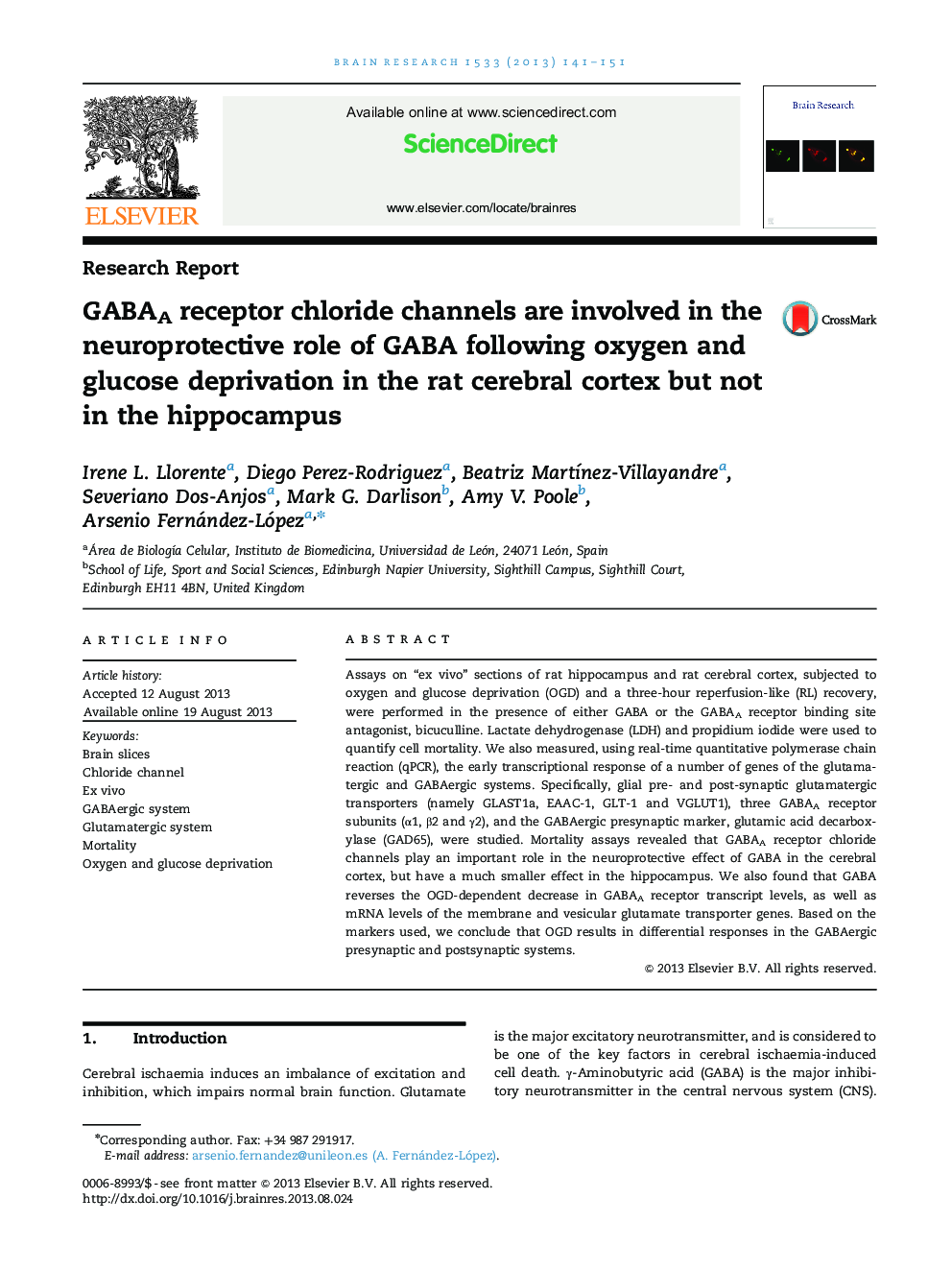| Article ID | Journal | Published Year | Pages | File Type |
|---|---|---|---|---|
| 4324540 | Brain Research | 2013 | 11 Pages |
•OGD-induced mortality in brain slices can be modulated by GABAergic agents.•This GABAergic modulation is different in cerebral cortex and hippocampus.•GABAergic agents modify the OGD-dependent decrease in gene transcript levels.•GABAergic agents differentially modulate GABAA receptor and glutamate transporter transcript levels in OGD.•GABAergic modulation is different for OGD and reperfusion-like conditions.
Assays on “ex vivo” sections of rat hippocampus and rat cerebral cortex, subjected to oxygen and glucose deprivation (OGD) and a three-hour reperfusion-like (RL) recovery, were performed in the presence of either GABA or the GABAA receptor binding site antagonist, bicuculline. Lactate dehydrogenase (LDH) and propidium iodide were used to quantify cell mortality. We also measured, using real-time quantitative polymerase chain reaction (qPCR), the early transcriptional response of a number of genes of the glutamatergic and GABAergic systems. Specifically, glial pre- and post-synaptic glutamatergic transporters (namely GLAST1a, EAAC-1, GLT-1 and VGLUT1), three GABAA receptor subunits (α1, β2 and γ2), and the GABAergic presynaptic marker, glutamic acid decarboxylase (GAD65), were studied. Mortality assays revealed that GABAA receptor chloride channels play an important role in the neuroprotective effect of GABA in the cerebral cortex, but have a much smaller effect in the hippocampus. We also found that GABA reverses the OGD-dependent decrease in GABAA receptor transcript levels, as well as mRNA levels of the membrane and vesicular glutamate transporter genes. Based on the markers used, we conclude that OGD results in differential responses in the GABAergic presynaptic and postsynaptic systems.
